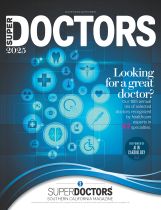American Heart Association Newsroom (AHA)
July 31, 2012
Study Highlights:
- More people survived sudden cardiac arrest without neurological impairment after a regional system improved post-arrest care.
- The proportion of survivors with favorable neurological status significantly increased from 19 percent to 51 percent.
- The findings support American Heart Association recommendations for post-arrest care.
Fewer sudden cardiac arrest survivors had neurologic impairment after a novel regional system of care was implemented, according to research published in Circulation, an American Heart Association journal.
In 2009, the Aizu region of Japan established an advanced post-cardiac arrest care system that included emergency medical services (EMS) taking survivors directly to hospitals specializing in advanced care or from an outlying hospital to the specialty hospital after an effective heartbeat was restored.
Advanced care includes therapeutic hypothermia, appropriate fluids, cardiovascular medications, respiratory management and procedures like percutaneous coronary intervention (PCI) to open blocked arteries.
The American Heart Association refers to these treatments as the "fifth link" in the Chain of Survival for sudden cardiac arrest.
Comparing data on patients who had suffered cardiac arrest before and after the regional system was implemented, researchers found:
- Survival to hospital discharge improved significantly, from 2.3 percent before to 4.2 percent after.
- After a month, 51 percent of surviving patients had favorable neurologic outcomes after vs. 19 percent before.
- Seventy-six percent of those whose heartbeat was restored received therapeutic hypothermia after vs. 11 percent before.
- All intensive care unit patients received appropriate hemodynamic management by using advanced hemodynamic monitoring system after vs. 0 percent before.
"Although there were concerns that the proportion of survivors with severe neurologic disability would increase, this did not occur," said Takashi Tagami, M.D., Ph.D., lead author of the study and an assistant professor at Nippon Medical School in Tokyo, Japan. "These findings suggest that the ‘fifth link' is associated with an increase in survival rate as well as improvement of quality of life among survivors."
One-month survival with a favorable neurologic outcome among all patients treated by EMS providers improved significantly after implementation of the fifth link - from 0.5 percent to 3 percent. Participants included 1,482 cardiac arrest patients in the Aizu region (Fukushima, Japan). Fifty-eight percent were male and the average age was 76. The pre-intervention period was January 2006 to April 2008 and post-intervention was January 2009 to December 2010.
Each year in the United States, more than 380,000 people suffer sudden cardiac arrest outside the hospital. The survival rate for non-traumatic cardiac arrest is extremely low -11.4 percent for those treated by EMS. Immediate, rapid and seamless care is essential to recovery.
In 2000, the American Heart Association recommended the "Chain of Survival" for cardiac arrest treatment. The four links in the "chain" included calling 9-1-1 for early access to emergency medical care; early CPR; early defibrillation; and early advanced cardiovascular life support. The association added the "fifth link" in its 2010 resuscitation guidelines.
"Post-cardiac arrest care requires a multidisciplinary approach to intensive care that is difficult to implement in a non-specialized hospital," Tagami said. "This study indicates that the introduction of the regional resuscitation system of care, the ‘fifth link,' made it possible to treat all potential survivors in the ICU of a specialized hospital."
Co-authors are Kazuhiko Hirata, M.D.; Toshiyuki Takeshige, M.D., Ph.D.; Junichiroh Matsui, M.D., Ph.D.; Makoto Takinami, M.D., Ph.D.; Masataka Satake, M.D.; Shuichi Satake, M.D.; Tokuo Yui, M.D.; Kunihiro Itabashi, M.D.; Toshio Sakata, M.D.; Ryoichi Tosa, M.D.; Shigeki Kushimoto, M.D., Ph.D.; Hiroyuki Yokota, M.D., Ph.D.; and Hisao Hirama, M.D.
Author disclosures are on the manuscript.

